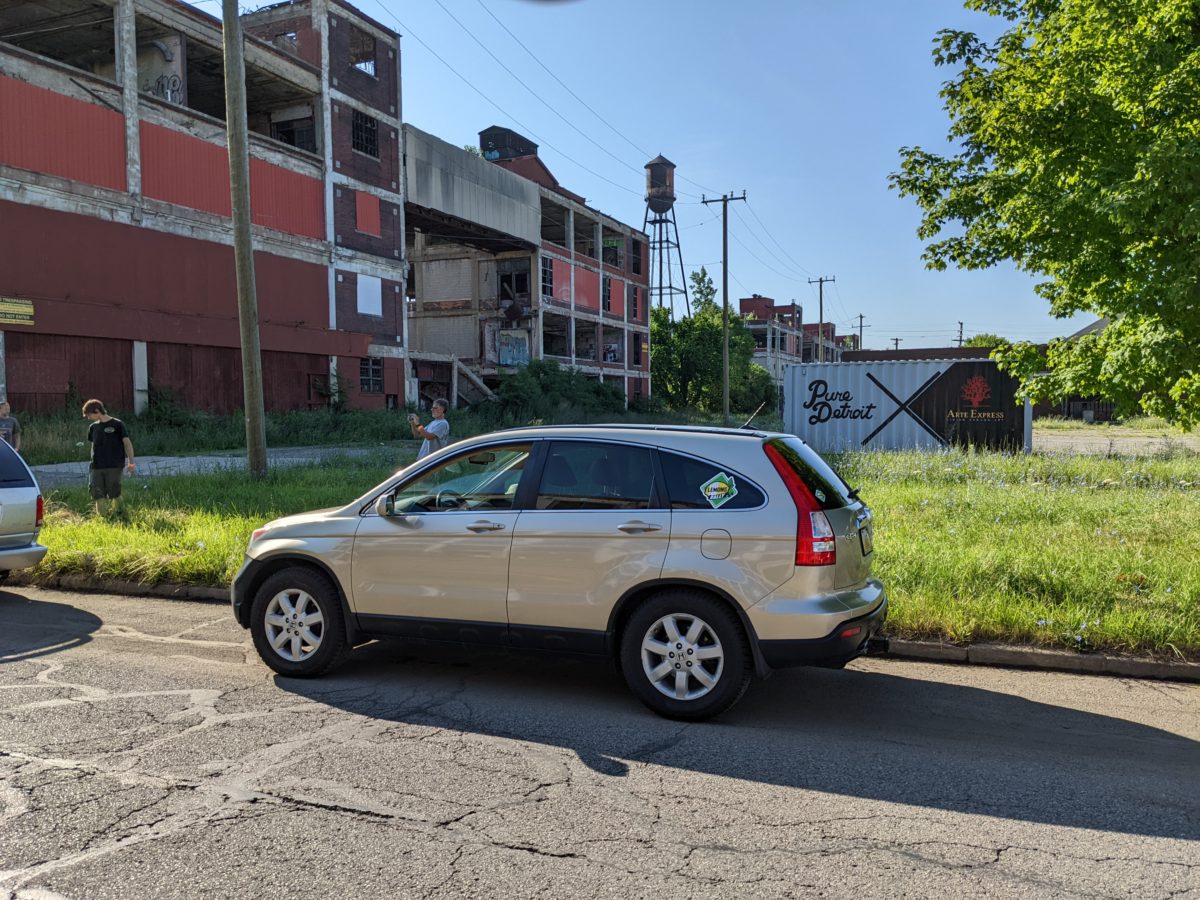Today’s leg of the rally involved travel from the Motor City to the Gem City, with the Packard Motor Car Company bookending the day.
The first business of the day is to get to the Detroit Bus Company for the starting line, and the driver’s meeting. The usual wisdom was dispensed (no speeding, respect others’ property, don’t be a nozzle, etc.), and we were soon on our way.
But first, let’s look at the fine collection of hoopties that arrived for the rally. The rally organizer, Eric, mentioned to us that there were 35 cars participating.
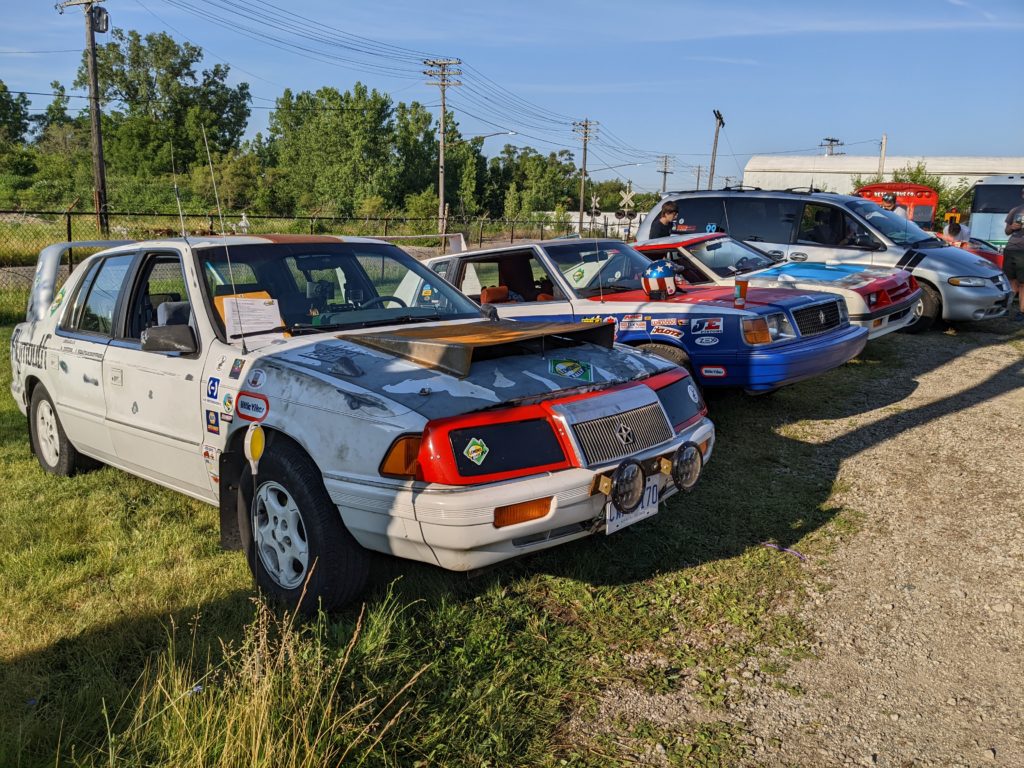
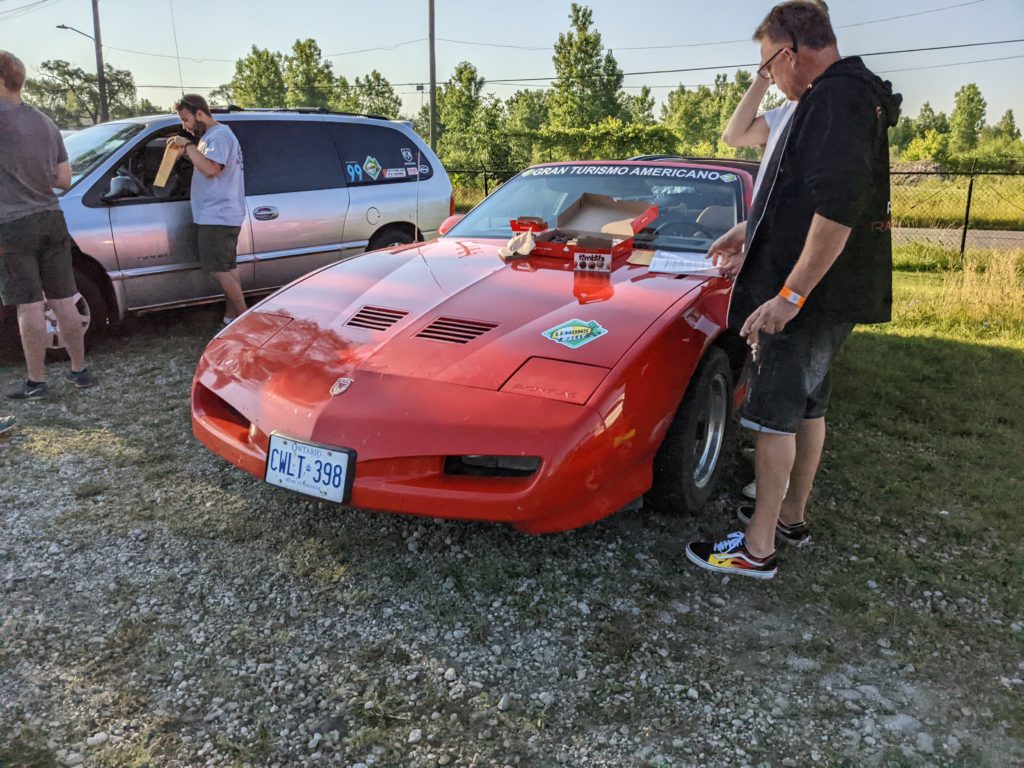
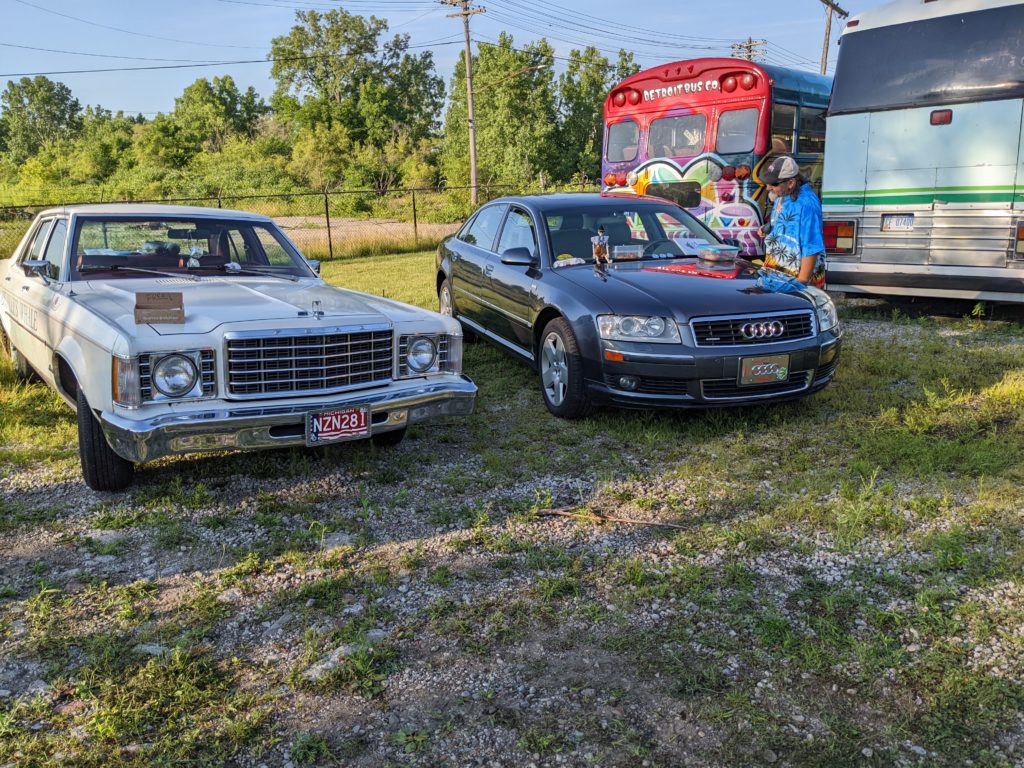
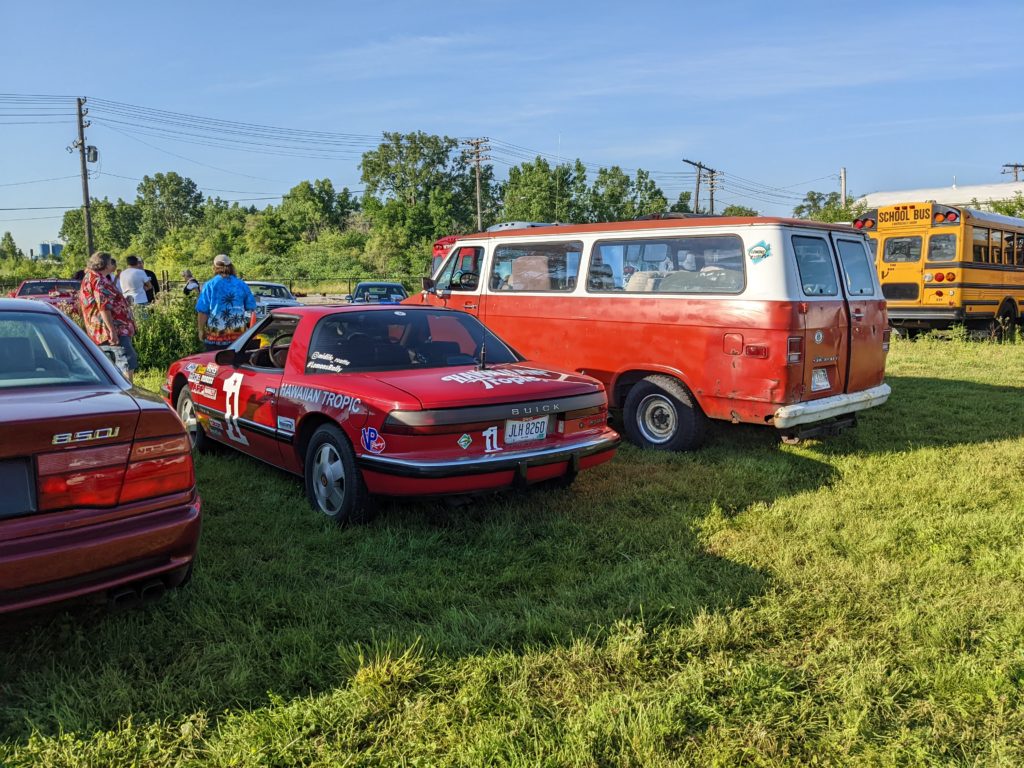
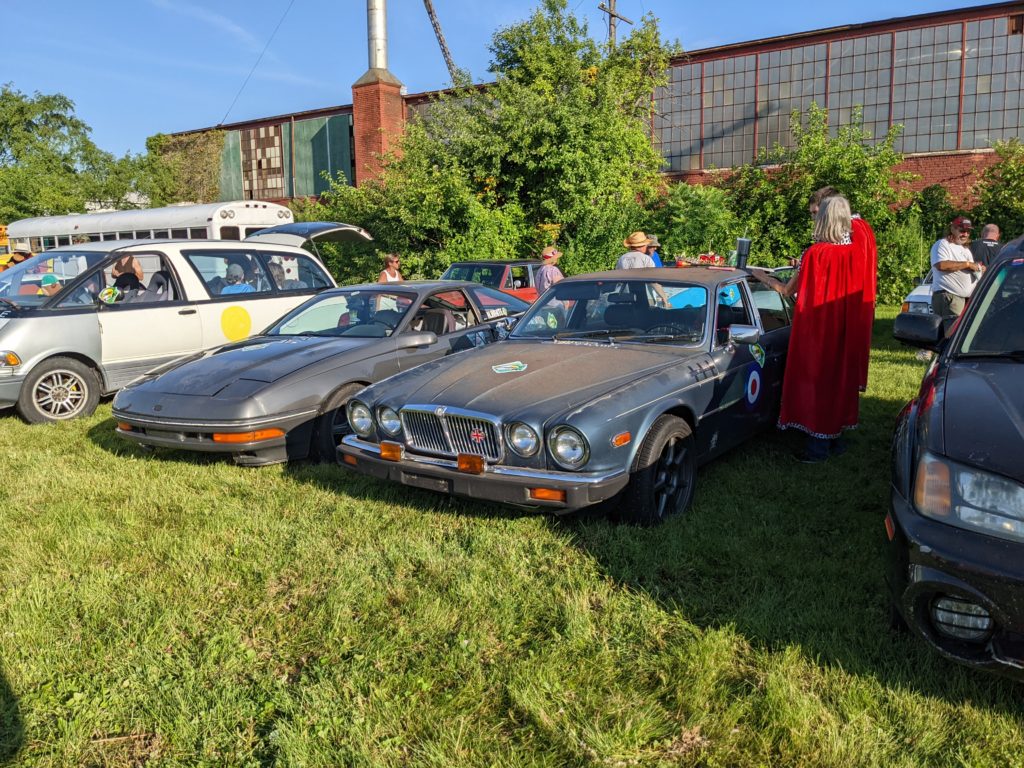
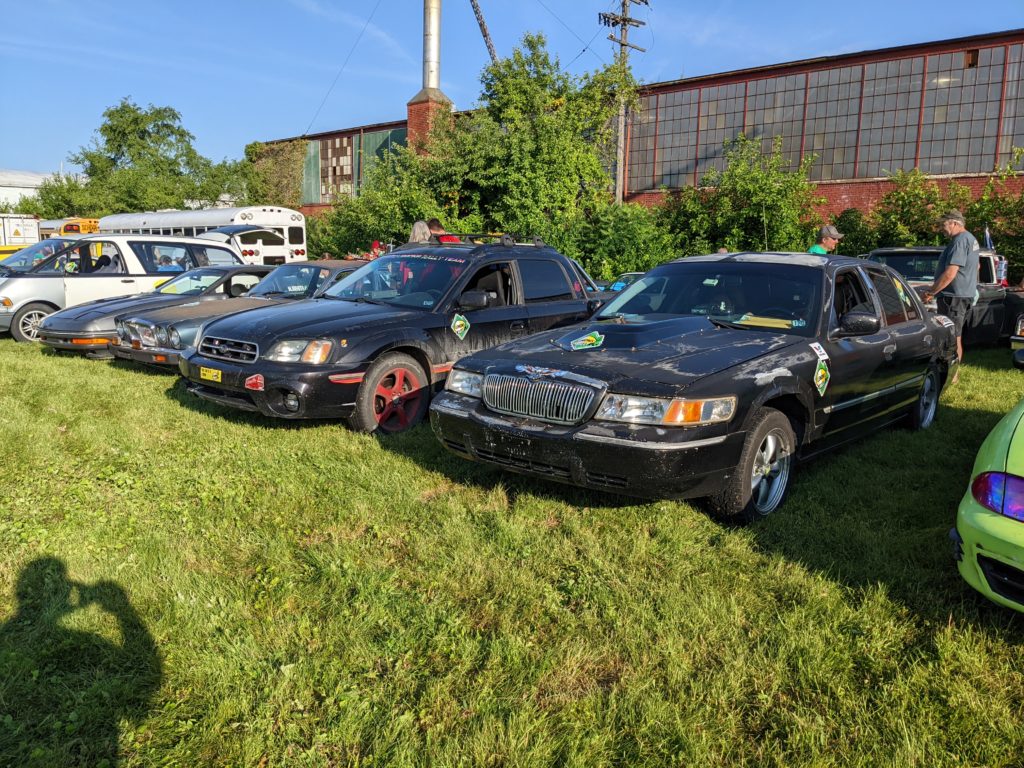
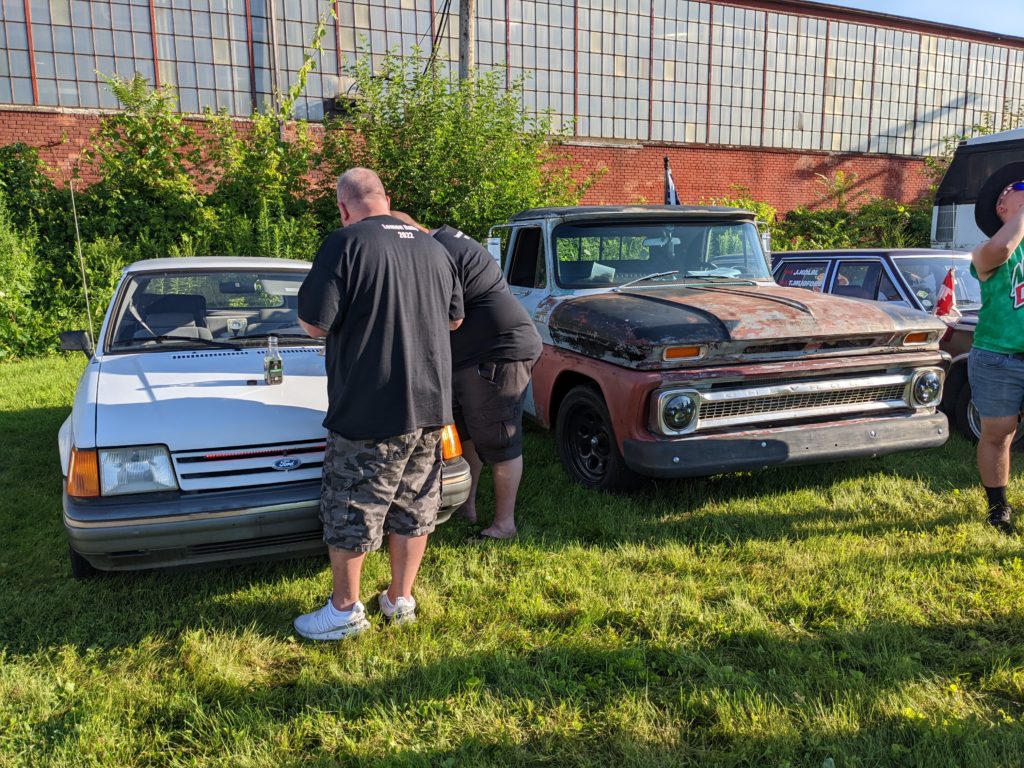
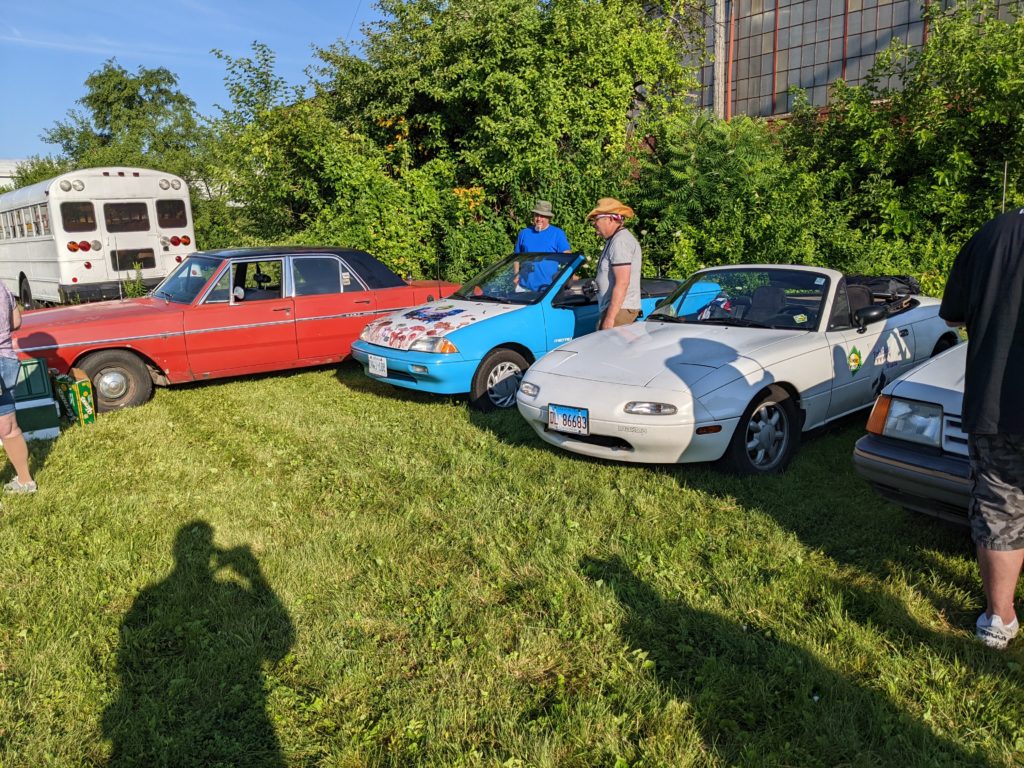
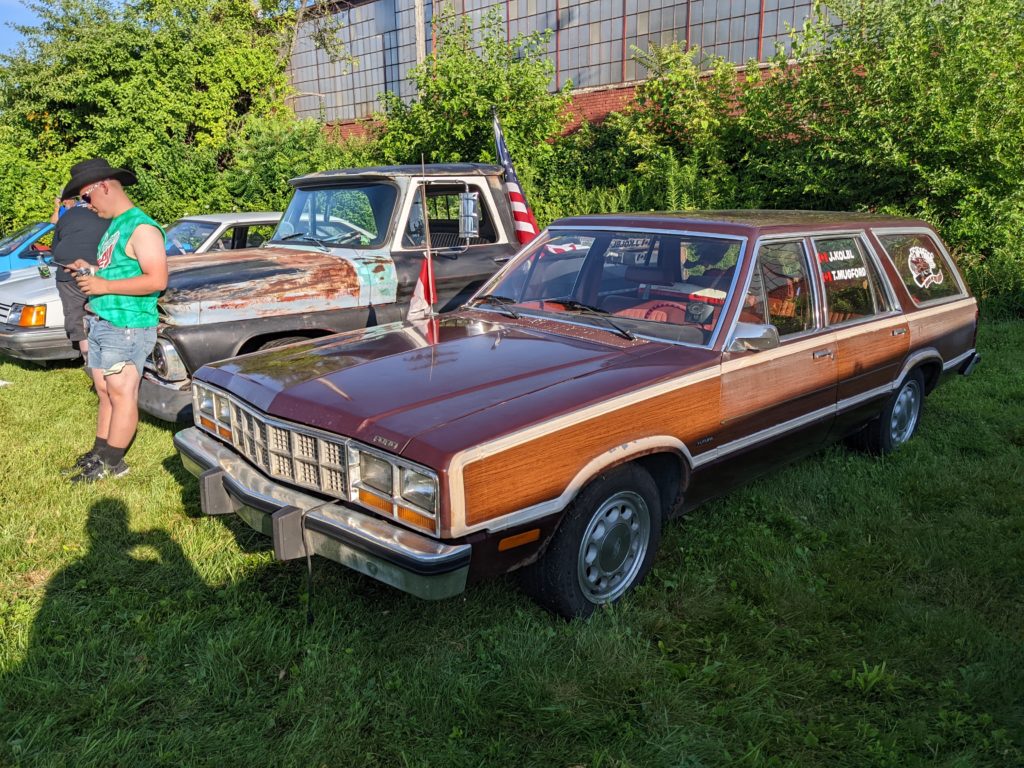
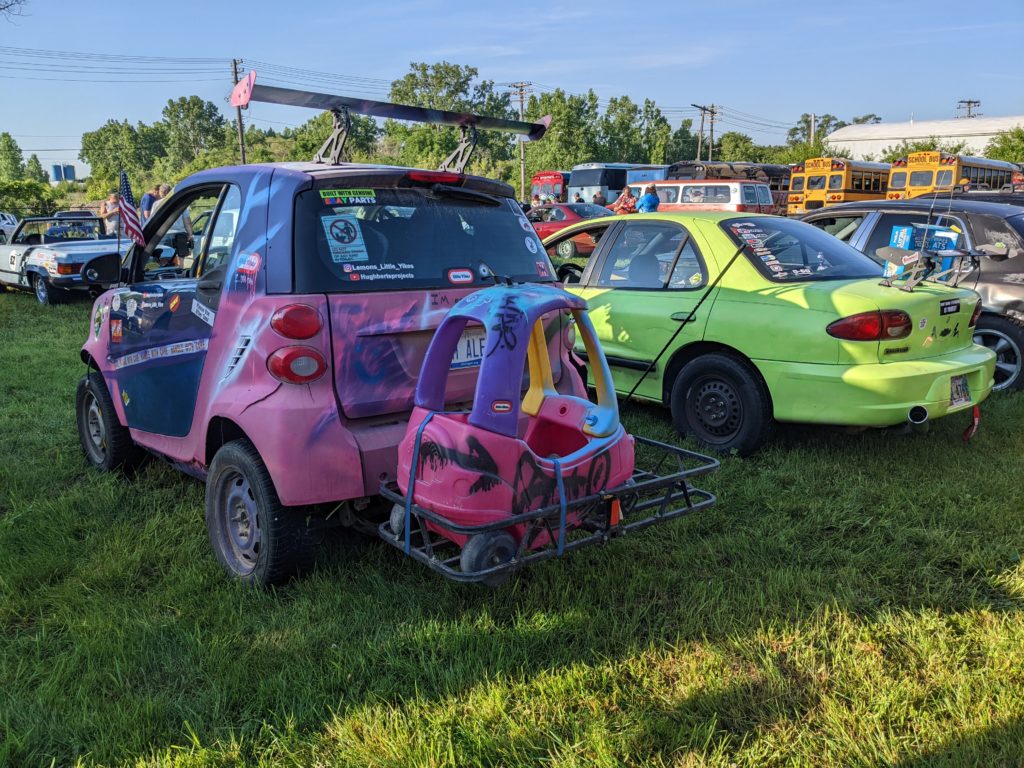
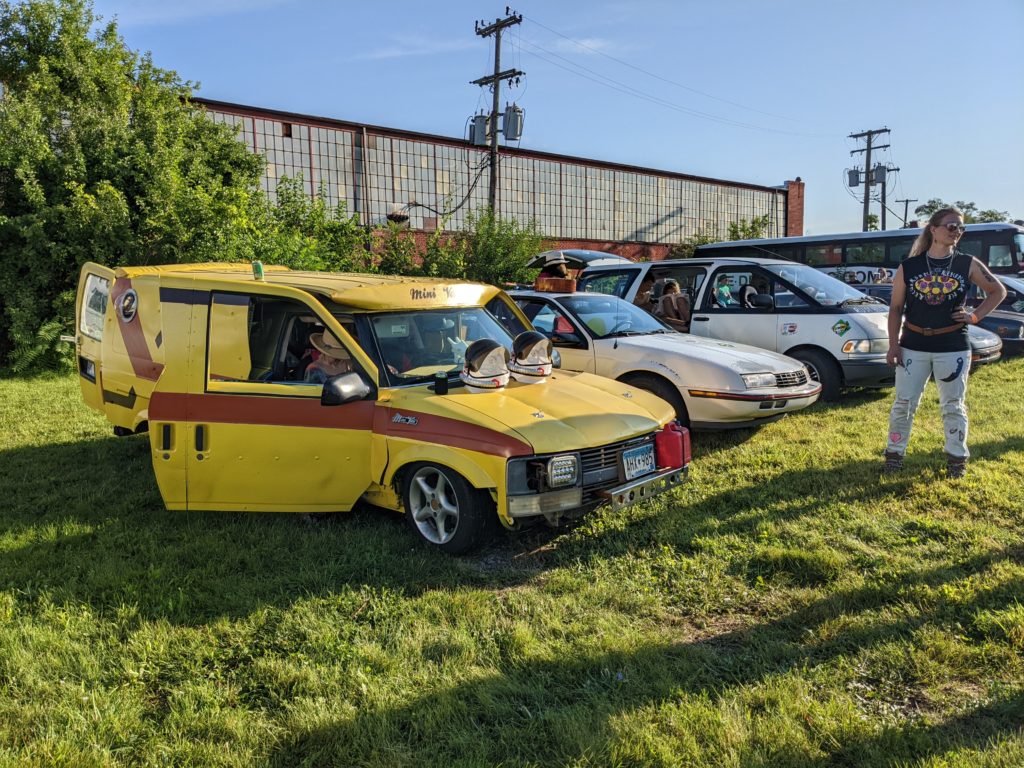
Our first stop on this rally was the colorful folk art installation: Hamtramck Disneyland. As early in the morning as it was, Disneyland wasn’t open (apparently, the princesses had not yet awakened…or were hung over?), so the best we could do was grab our photos from in front of the house, then move on.
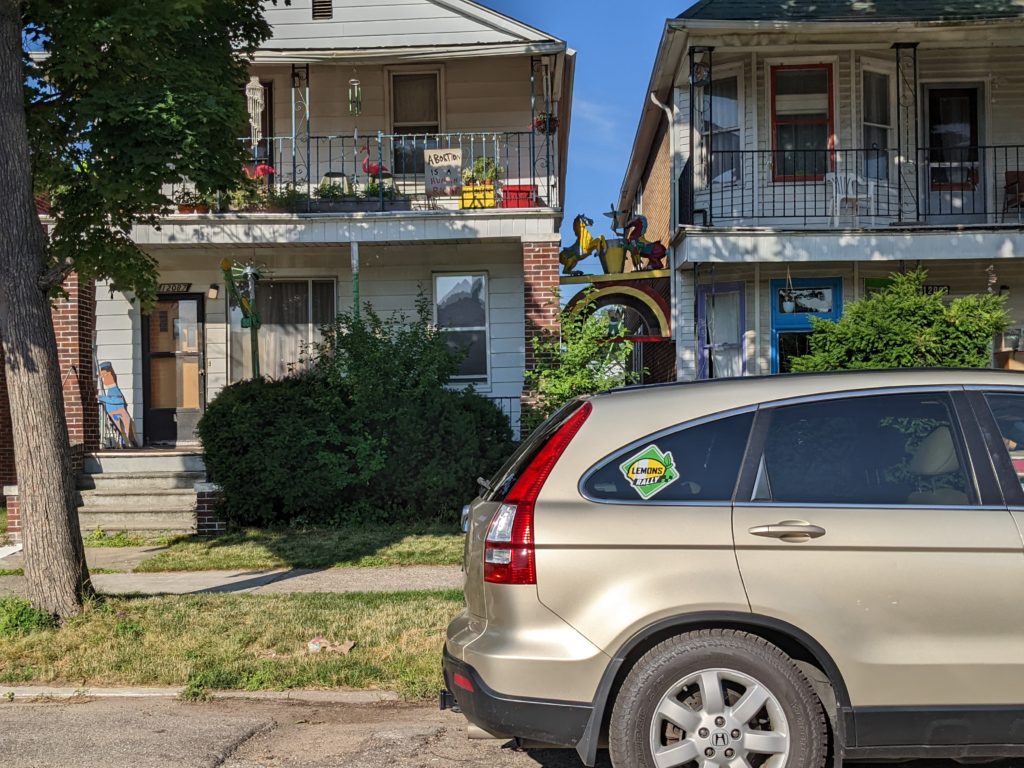
Hamtramck was originally the Polish (and bowling) epicenter of the area, and is also one of two cities whose borders are completely surrounded by the city of Detroit. (The other is Highland Park.) Hamtramck was also home to the General Motors “Poletown” plant. Hamtramck Disneyland was assembled over the course of seven years, completed in 1999 by its artist Dmytro Szylak.
Our next stop was a well-known local eyesore/landmark that is headed towards demolition in mere weeks from now–the Packard Automobile Plant. This one hits a little close to home since my grandfather put in over 25 years at the company, and I am the keeper of his gold 25th anniversary pocket watch. I may return to the site when demolition begins and get a few photos. Luckily, the other rally participants got to see what was left of this once great auto factory before it is gone. Packard would figure prominently later in the day.
Oh, the irony (of the billboard)…
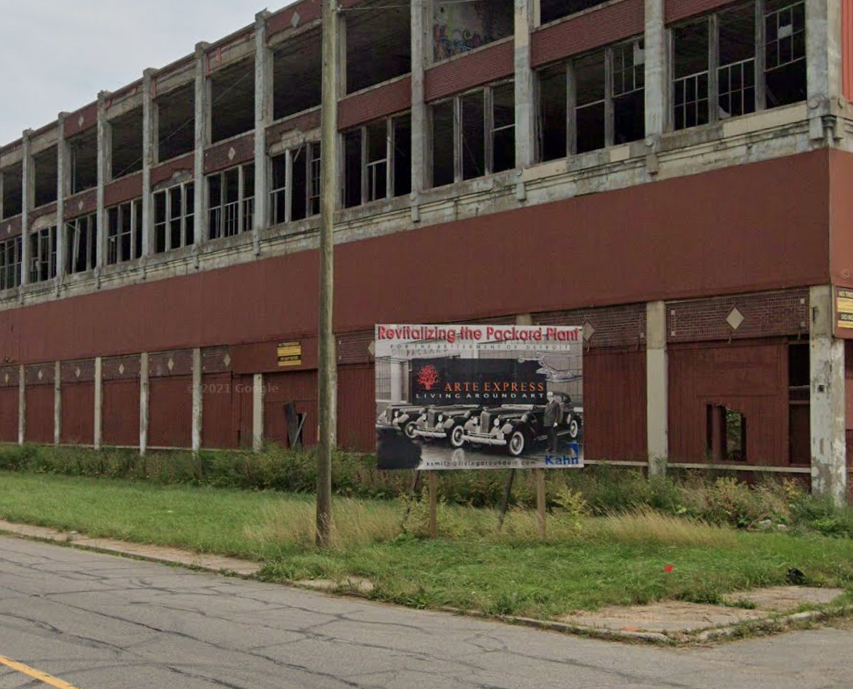
The current status? The owner is a South American developer who had grand plans to build a multi-use site with residential and retail offerings for the locals. The plans never materialized, the property remained dilapidated, and the city wanted the buildings removed. Since the developer did not respond to a court date, the city will be demolishing the buildings and put a lien on the property for the cost of demolition; in essence, the city could foreclose on the plot of land and take it away from the developer who promised to develop it.
The final stop in Michigan was a place that is lost to most who live in Michigan. This is the Lost Peninsula, roughly 3,000 ft. long by 2,500 ft. wide, that is not accessible through any means except to drive through Toledo, Ohio…or arrive by boat. We had to locate Webber’s Waterfront Restaurant. The rest of the peninsula has a few dozen private homes, and a lot of dockage for boats.
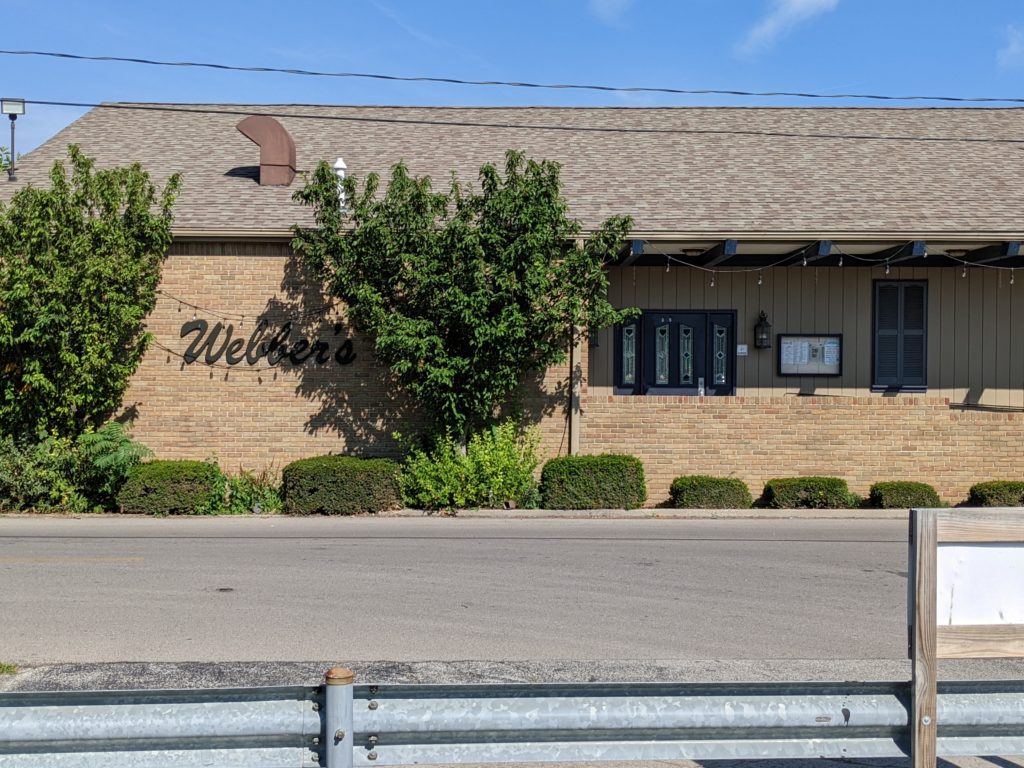
Webber’s itself has an interesting history. It opened in 1933, essentially, as a business that sold beer to Ohio residents as, at the time, Ohio only sold beer Monday through Saturday, but Michigan law permitted the sale of beer on Sunday. Webber’s is located only 225 feet from the Michigan border. In later years, the tavern was destroyed by fire (1936), rebuilt, restored by a tornado in 1965, rebuilt again, destroyed by fire again in 1984, and rebuilt a third time in its present state. At first a tavern that dispensed suds, it is now a seafood restaurant with a full menu.
With Toledo mere feet away, our next stop was not far away. We had to locate a former “Queen of the Lakes” freighter, and found it was moored at the Great Lakes Museum. The Col. James M. Schoonmaker was a freighter first launched in 1911, retired in 1980, and opened as a museum ship in 2014.
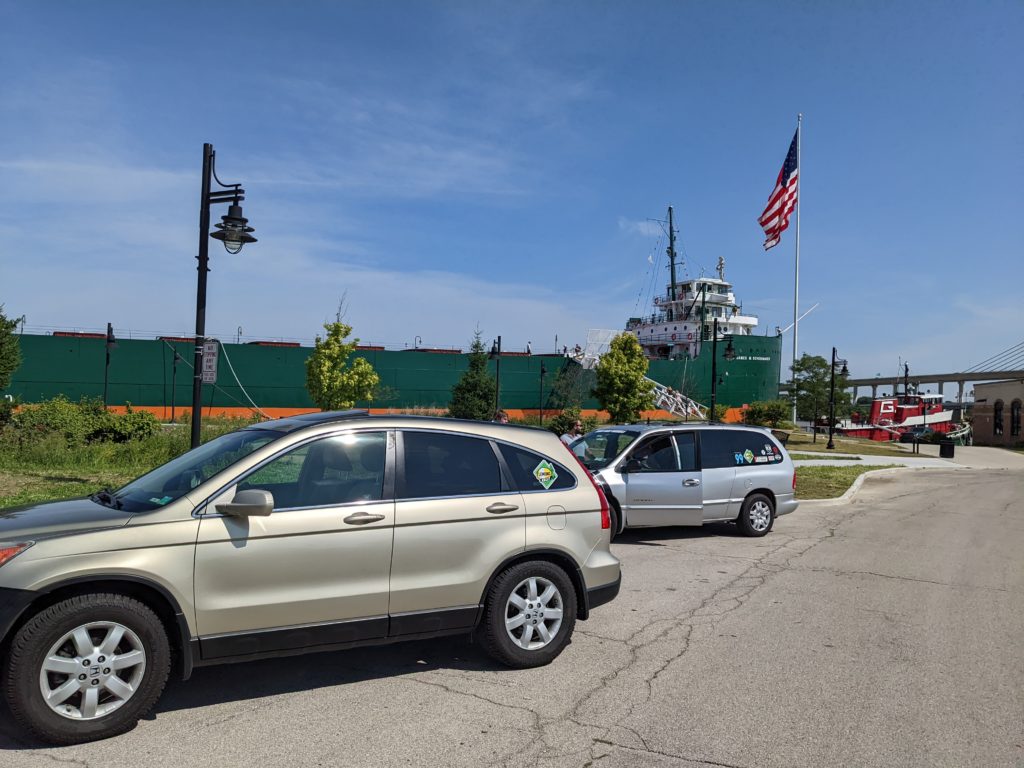
Not too far away in Maumee, we had to locate the Fallen Timbers Memorial. The Battle of Fallen Timbers, on August 20, 1794, has been called the last battle of the American Revolution, with General Anthony Wayne’s troops defeating an army of Indian tribes which opened up the Northwest Territory for westward expansion and led to Ohio’s statehood in 1803. The battlefield was littered with fallen trees from a recent tornado, hence the name.
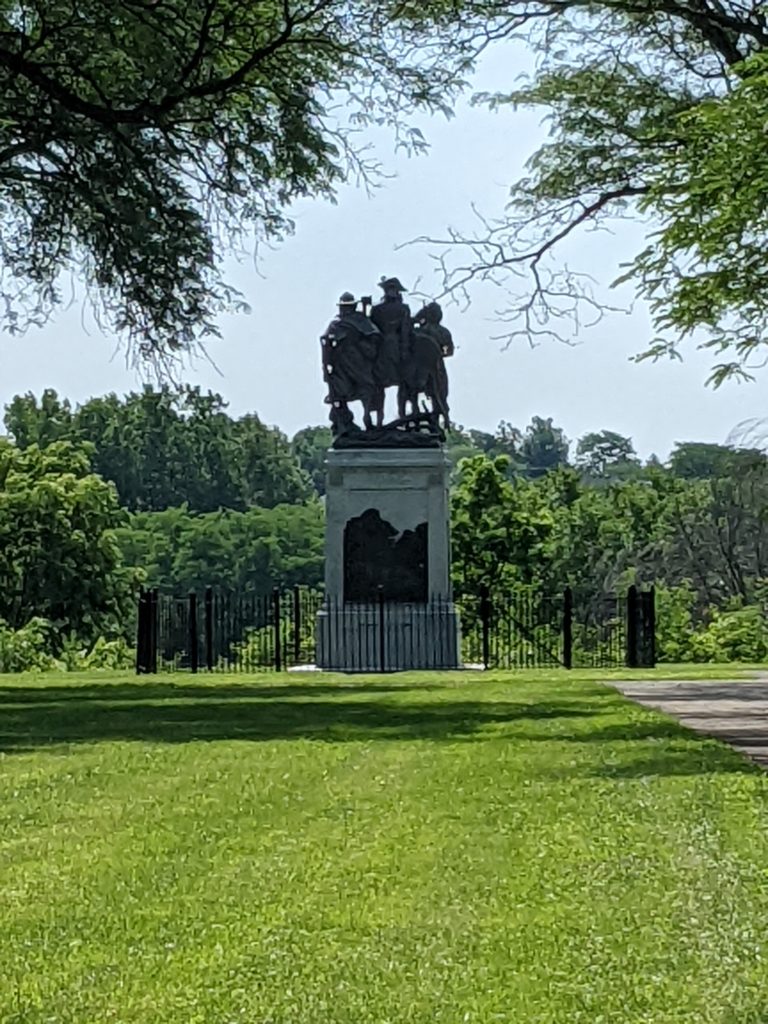
As with many stops on the rally, several of us congregated at the memorial parking lot. Yes…that is a “Smurf” in the lead position.
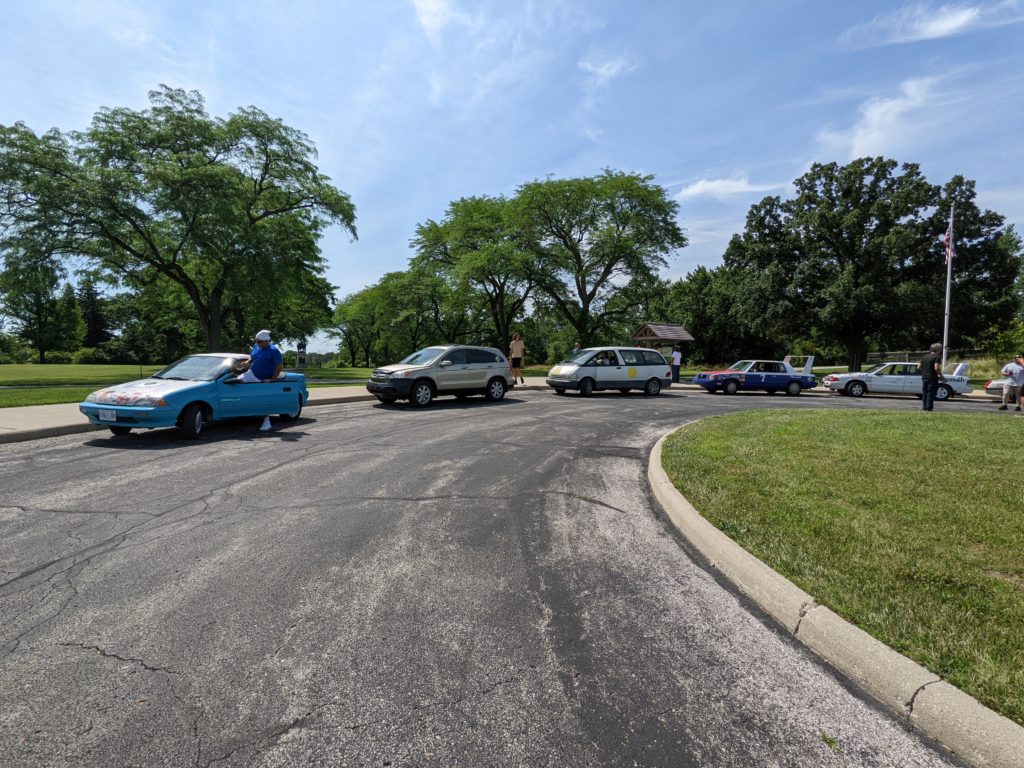
Not far away was our next stop, the Lima-Toledo Interurban Railway Bridge, which spans the Maumee River and joins Lucas and Wood counties. Built in 1908, it was once the world’s largest earth-filled reinforced concrete bridge. Given economic conditions, the bridge was used by a few different railway companies until it was finally abandoned in 1937 by the Cincinnati and Lake Erie Railroad.
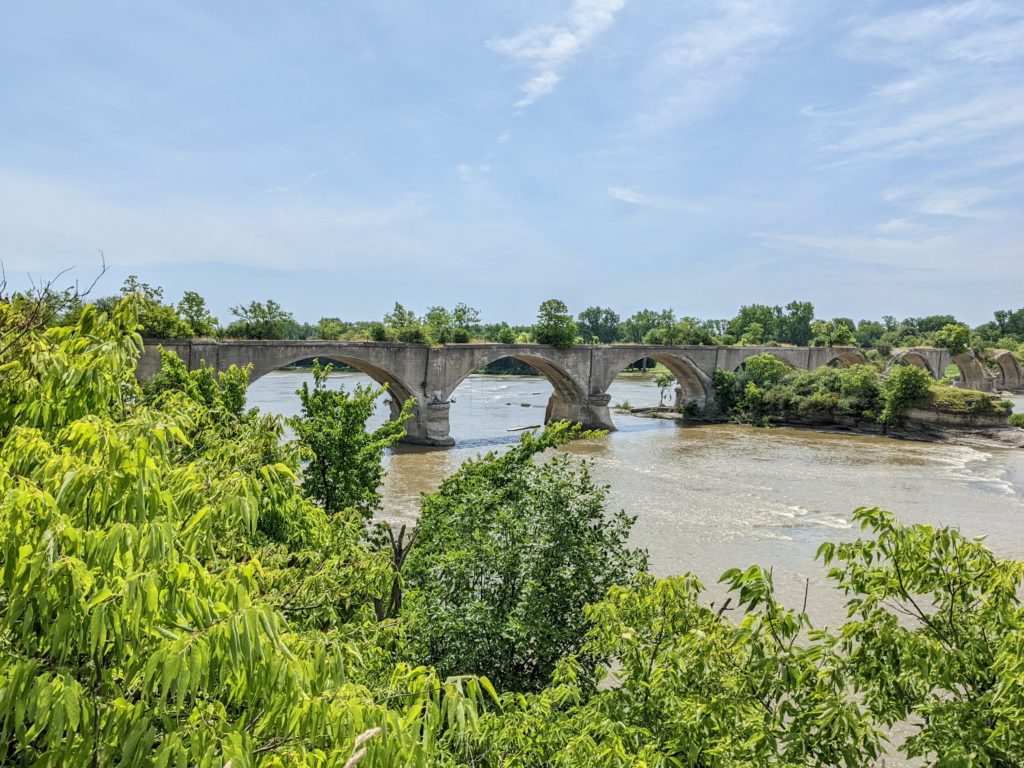
We moved on from the Toledo area, eventually heading southeast to within ten miles of the Indiana border.
